
Lille: The Heartbeat of Northern France
Discover Lille: A blend of Flemish charm and French elegance, where history, art, and culinary delights await in the heart of Northern France.
Nestled close to the Belgian border, Lille is a vibrant city that blends rich history with modern charm. Known for its Flemish influences, Lille offers a unique cultural experience. As you stroll through the cobblestone streets of Vieux Lille, the city's old town, you'll be enchanted by the well-preserved buildings, quaint cafes, and boutique shops. One of Lille's most striking landmarks is the Grand Place, a bustling square surrounded by stunning architecture. Here, you can marvel at the Vieille Bourse, an ornate 17th-century stock exchange, and the towering belfry of the Chambre de Commerce. The square often hosts lively events and markets, making it the perfect spot to soak in the local atmosphere. Art lovers will find paradise in Lille's many museums. The Palais des Beaux-Arts is one of the largest museums in France and houses an impressive collection of European paintings, sculptures, and ceramics. For a more contemporary experience, visit the LaM, Lille's Museum of Modern Art, which features works by Picasso and Modigliani. Nature enthusiasts can escape the city's hustle and bustle in the serene Parc de la Citadelle. This expansive park is perfect for leisurely walks, picnics, and even a visit to the Lille Zoo. Additionally, Lille is renowned for its culinary scene. Indulge in local delicacies such as moules-frites, carbonnade flamande, and a variety of delicious pastries. Lille's strategic location makes it an excellent base for exploring other parts of Northern France and Belgium. With its friendly locals and vibrant atmosphere, Lille promises an unforgettable experience for every traveler.
Local tips in Lille
- Visit the Wazemmes Market on Sunday mornings for a lively local experience and fresh produce.
- Use the Lille City Pass for free entry to many attractions and unlimited public transport.
- Try the local beer at one of the many craft breweries scattered throughout the city.
- Don't miss the Braderie de Lille, the largest flea market in Europe, held annually in September.
- Explore the narrow streets of Vieux Lille in the evening to enjoy the charming ambiance and vibrant nightlife.
Neighbourhoods in Lille
Lille: The Heartbeat of Northern France
Nestled close to the Belgian border, Lille is a vibrant city that blends rich history with modern charm. Known for its Flemish influences, Lille offers a unique cultural experience. As you stroll through the cobblestone streets of Vieux Lille, the city's old town, you'll be enchanted by the well-preserved buildings, quaint cafes, and boutique shops. One of Lille's most striking landmarks is the Grand Place, a bustling square surrounded by stunning architecture. Here, you can marvel at the Vieille Bourse, an ornate 17th-century stock exchange, and the towering belfry of the Chambre de Commerce. The square often hosts lively events and markets, making it the perfect spot to soak in the local atmosphere. Art lovers will find paradise in Lille's many museums. The Palais des Beaux-Arts is one of the largest museums in France and houses an impressive collection of European paintings, sculptures, and ceramics. For a more contemporary experience, visit the LaM, Lille's Museum of Modern Art, which features works by Picasso and Modigliani. Nature enthusiasts can escape the city's hustle and bustle in the serene Parc de la Citadelle. This expansive park is perfect for leisurely walks, picnics, and even a visit to the Lille Zoo. Additionally, Lille is renowned for its culinary scene. Indulge in local delicacies such as moules-frites, carbonnade flamande, and a variety of delicious pastries. Lille's strategic location makes it an excellent base for exploring other parts of Northern France and Belgium. With its friendly locals and vibrant atmosphere, Lille promises an unforgettable experience for every traveler.
When is the best time to go to Lille?
Iconic landmarks you can’t miss
Zoo de Lille
Discover the vibrant animal kingdom at Zoo de Lille, a family-friendly park that combines wildlife encounters with lush landscapes for an unforgettable experience.

La Vieille Bourse
Discover La Vieille Bourse in Lille: a stunning 17th-century landmark, a vibrant market hub, and a cultural treasure in the heart of the city.

Palais des Beaux Arts
Explore the stunning Palais des Beaux Arts in Lille, home to thousands of art pieces from the Middle Ages to modern times, a cultural treasure in France.

Notre-Dame-de-la-Treille Cathedral
Explore the stunning Notre-Dame-de-la-Treille Cathedral in Lille, a masterpiece of Gothic architecture blended with modern artistry.

Théâtre Sébastopol
Experience the vibrant cultural scene of Lille at Théâtre Sébastopol, a historic performing arts theater showcasing diverse live performances.

Natural History Museum
Discover the Natural History Museum in Lille, where the wonders of the natural world come alive through engaging exhibits and rich educational experiences.

Jardin Vauban
Explore the tranquil beauty of Jardin Vauban, Lille's stunning garden oasis, perfect for relaxation, picnics, and nature appreciation.

Grand Place
Experience the enchanting atmosphere of Grand Place in Lille, a historical landmark surrounded by stunning architecture and vibrant local culture.
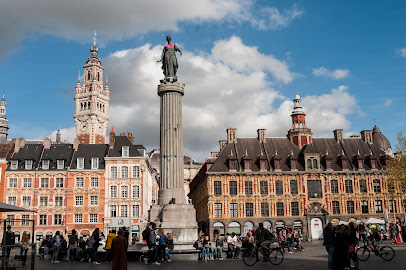
Parc de la Citadelle
Explore the lush landscapes and historical charm of Parc de la Citadelle, a peaceful retreat in the vibrant city of Lille.

LaM, Lille Métropole Musée d'art moderne, d'art contemporain et d'art brut
Explore LaM in Lille Métropole for a captivating journey through modern, contemporary, and outsider art in a unique museum setting.

Porte de Paris
Explore the grandeur of Porte de Paris, a historic triumphal arch in Lille, featuring stunning architecture and beautiful gardens.

Lille Opera
Discover the enchanting Lille Opera, where stunning architecture meets captivating performances in the cultural heart of Lille, France.

Beffroi de Lille
Discover the Beffroi de Lille, a UNESCO World Heritage site, where history and breathtaking views come together in the heart of Lille.

Maison natale Charles de Gaulle
Discover Charles de Gaulle's birthplace in Lille - a historical landmark blending personal history and national significance.
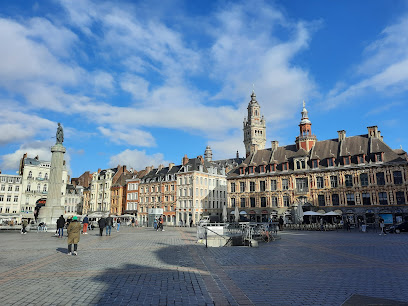
Musée de l'Hospice Comtesse
Explore the rich history and exquisite art at Musée de l'Hospice Comtesse, a charming museum in Lille showcasing Flemish heritage.

Unmissable attractions to see
Pierre Mauroy Stadium
Discover the excitement of Pierre Mauroy Stadium, a premier venue for sports and concerts in Villeneuve-d'Ascq, France.

Zoo de Lille
Discover the enchanting Zoo de Lille – a sanctuary for wildlife and a delightful park for families in the heart of Lille, France.

Lille Grand Palais
Explore Lille Grand Palais, a modern convention center in Lille, France, hosting diverse events and providing access to the city's rich culture and history.

Palais des Beaux Arts
Explore the artistic wonders of Palais des Beaux Arts, Lille's premier art museum, featuring masterpieces from centuries past in majestic surroundings.

In Flanders Fields Museum
Explore the poignant history of World War I at the In Flanders Fields Museum in Ypres, Belgium, where personal stories come to life.

Notre-Dame-de-la-Treille Cathedral
Explore the stunning Notre-Dame-de-la-Treille Cathedral, a neo-Gothic masterpiece in Lille, featuring breathtaking stained glass and rich historical significance.

Memorial Museum Passchendaele 1917
Explore the harrowing history of World War I at the Memorial Museum Passchendaele 1917, a touching tribute to bravery and sacrifice.

Natural History Museum
Discover the wonders of nature at Lille's Natural History Museum, where engaging exhibits and collections await every curious visitor.

Jardin Vauban
Explore the enchanting Jardin Vauban in Lille, a serene garden filled with vibrant flora, tranquil ponds, and diverse wildlife perfect for relaxation.

Parc Jean-Baptiste Lebas
Discover the beauty and tranquility of Parc Jean-Baptiste Lebas, a lush urban park in Lille ideal for relaxation and recreation.

Carrière Wellington
Delve into the historical depths of Carrière Wellington, a remarkable underground site in Arras, France, showcasing World War I's profound legacy.

Parc de la Citadelle
Explore the tranquil beauty of Parc de la Citadelle, an urban paradise in Lille offering lush gardens and historical charm.

Parc de la Citadelle
Explore Parc de la Citadelle, a tranquil urban park in Lille featuring lush landscapes, historical monuments, and a perfect spot for outdoor activities.

LaM, Lille Métropole Musée d'art moderne, d'art contemporain et d'art brut
Explore LaM, a captivating art museum in Villeneuve-d'Ascq, featuring modern, contemporary, and outsider art in a stunning architectural setting.

Cita-Parc
Discover the joy of adventure and family fun at Cita-Parc, Lille's premier amusement park with thrilling rides and delightful attractions.

Essential places to dine
Estaminet Au Vieux De La Vieille
Savor the flavors of Lille at Estaminet Au Vieux De La Vieille, where traditional French cuisine meets cozy bistro charm.

L'Arrière Pays
Discover exquisite French cuisine at L'Arrière Pays in Lille, where tradition meets innovation in every delectable dish.

La Luck
Discover La Luck: A unique restaurant and bar in Lille offering creative French cuisine and vibrant nightlife experiences.

Les Fils à Maman Lille
Discover the heartwarming flavors of French comfort food at Les Fils à Maman Lille – where nostalgia meets culinary creativity.

Les Compagnons de la Grappe
Experience authentic French cuisine at Les Compagnons de la Grappe, where traditional flavors meet warm hospitality in the heart of Lille.

Estaminet Chez La Vieille
Discover authentic French cuisine at Estaminet Chez La Vieille, where tradition meets taste in the heart of Lille.
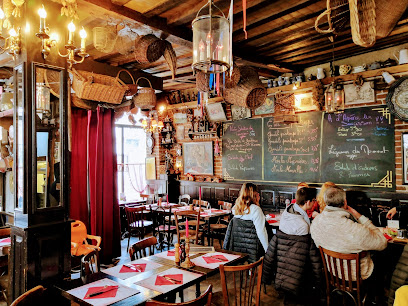
Le Barbier qui fume Vieux Lille
Experience exquisite French cuisine at Le Barbier qui fume in Vieux Lille – a haven for cold cut lovers and culinary enthusiasts alike.

Il Ristorante
Experience authentic Italian cuisine at Il Ristorante in Lille - where every meal is a celebration of flavor and tradition.

Le Broc
Experience the charm of French cuisine at Le Broc in Lille - where tradition meets culinary excellence.

La Petite Cour
Discover the authentic flavors of France at La Petite Cour in Lille – where every dish tells a story.

Le Broc du Vieux Lille
Experience authentic French cuisine at Le Broc du Vieux Lille, where tradition meets contemporary flair in every dish.

Bloempot
Experience the finest French cuisine at Bloempot in Lille—where fresh ingredients meet innovative culinary artistry.

Chez Max Bistrot Lillois
Experience authentic French cuisine at Chez Max Bistrot Lillois in Lille - a culinary haven rich in flavor and tradition.

Estaminet Les Ptiots
Discover authentic French cuisine at Estaminet Les Ptiots in Lille—a charming bistro offering local flavors and warm hospitality.

Rouge Barre
Experience the pinnacle of French cuisine at Rouge Barre in Lille - where tradition meets innovation for an unforgettable dining experience.

Markets, malls and hidden boutiques
Westfield Euralille
Experience the ultimate shopping adventure at Westfield Euralille, where fashion meets entertainment in the heart of Lille, France.
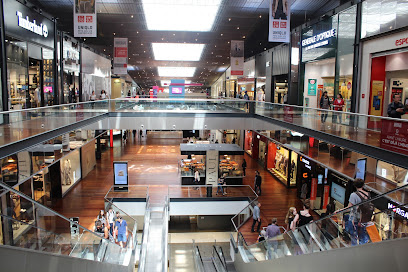
Printemps
Discover the finest shopping experience at Printemps in Lille, where fashion, elegance, and unique finds await every visitor.
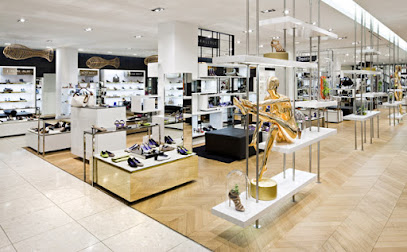
Centre commercial Les Tanneurs
Experience the ultimate shopping destination in Lille at Centre Commercial Les Tanneurs, blending fashion, dining, and entertainment under one roof.
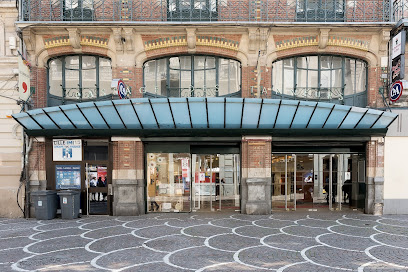
Lillenium
Explore Lillenium, Lille's vibrant shopping mall offering a mix of fashion, dining, and entertainment experiences in a modern setting.

Bshop Basketball Lille
Discover Bshop Basketball in Lille – Your ultimate destination for top-notch basketball gear and a vibrant community atmosphere.

Au Bois des Eldars
Explore a mystical haven of crystals and metaphysical treasures at Au Bois des Eldars in Lille, where every corner is filled with enchantment.

Mademoiselle Biloba - L'atelier cosmétique
Discover natural beauty at Mademoiselle Biloba, Lille's premier cosmetics store and beauty salon, where personalized care meets artisanal quality.
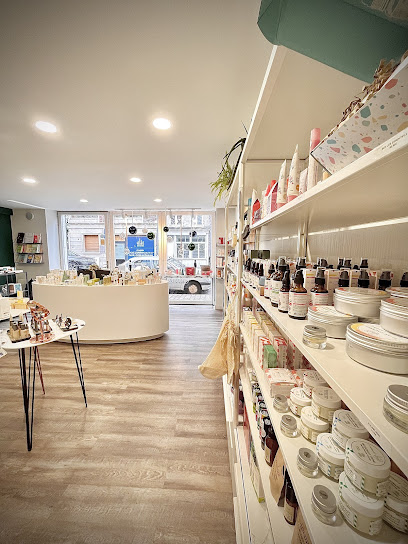
Flying Tiger Copenhagen Lille Esquermoise
Discover a whimsical gift shop experience at Flying Tiger Copenhagen in Lille, with unique souvenirs, home goods, and playful treasures waiting for you.

Boutique LOSC Lille Centre
Explore the latest fashion trends at Boutique LOSC Lille Centre, a stylish clothing store in the vibrant heart of Lille, France.

el MARKET
Discover unique gifts and local treasures at el MARKET in Lille, where every item tells a story and captures the essence of the region.
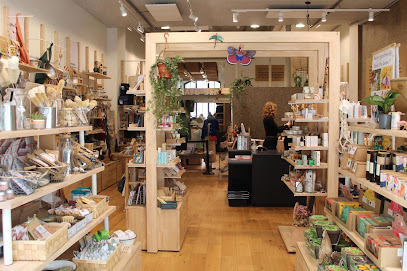
Le Comptoir Irlandais Lille
Explore the essence of Ireland in Lille at Le Comptoir Irlandais, your go-to spot for unique gifts, clothing, and gourmet delights.

Little Cecile
Discover Little Cecile in Lille, where unique gifts, toys, and stylish baby clothing for little ones await in a charming atmosphere.

Passage du Désir, l'anti sex shop
Explore the playful side of shopping at Passage du Désir, Lille's unique gift shop offering an array of adult and novelty items.

PYLONES
Experience the vibrant creativity of PYLONES in Lille, a must-visit gift shop filled with unique souvenirs and colorful home decor.

The Wizard's Shop Lille
Explore The Wizard's Shop Lille, where magic and creativity come alive with unique gifts and enchanting treasures for all ages.

Essential bars & hidden hideouts
Quai Des Bananas
Discover the lively ambiance and exquisite cocktails at Quai Des Bananas, a must-visit cocktail bar in the heart of Lille.

Dernier Bar avant la Fin du Monde - Lille
Experience Lille's vibrant nightlife at Dernier Bar avant la Fin du Monde, where unique cocktails meet nostalgic arcade fun.

Le Lobby
Experience the lively atmosphere at Le Lobby, Lille's favorite pub for drinks, live music, and unforgettable nights out.

Joker Cocktails & Bar
Discover Lille's premier cocktail destination, Joker Cocktails & Bar, where innovative drinks meet a lively atmosphere for an unforgettable night out.

Au Boudin Bar
Discover Au Boudin Bar: A lively beer hall in Lille serving exquisite Italian cuisine and a diverse beer selection for an unforgettable experience.

Le Farafina
Experience the vibrant nightlife of Lille at Le Farafina, where expertly crafted cocktails meet a lively atmosphere for unforgettable evenings.

Pub Mac Ewan's
Discover the vibrant atmosphere of Pub Mac Ewan's in Lille, where local culture meets delightful drinks and hearty cuisine.

La Pirogue
Discover La Pirogue, Lille's lively cocktail bar offering creative drinks and a vibrant atmosphere perfect for unwinding after a day of exploration.

Kolor Bar
Discover the lively spirit of Lille at Kolor Bar, where vibrant cocktails and a welcoming atmosphere create unforgettable nightlife experiences.

Le Bar Parallèle & Falafel
Discover the vibrant charm of Le Bar Parallèle & Falafel - where delicious falafel meets a lively bar atmosphere in the heart of Lille.

L'imprévu
Discover the lively atmosphere and innovative cocktails at L'imprévu, Lille's premier cocktail bar and sports bar destination.

Le Kremlin
Discover the local nightlife at Le Kremlin, a vibrant bar in Lille with themed ambiance and a welcoming atmosphere for all visitors.

Little Havana
Discover Little Havana in Lille - A vibrant cocktail bar bringing the spirit of Cuba to life with exquisite drinks and a lively atmosphere.

L'Illustration
Discover L'Illustration, Lille's vibrant cocktail bar where art meets mixology, perfect for a night out filled with creativity and flavor.

Temple's Bar
Discover Temple's Bar in Lille, a lively cocktail bar offering an extensive drink menu and a vibrant atmosphere, perfect for socializing and relaxation.

Local Phrases
-
- HelloBonjour
[bon-zhoor] - GoodbyeAu revoir
[oh ruh-vwahr] - YesOui
[wee] - NoNon
[noh] - Please/You're welcomeS'il vous plaît
[seel voo pleh] - Thank youMerci
[mehr-see] - Excuse me/SorryExcusez-moi
[ehk-skyoo-zay mwa] - How are you?Comment ça va?
[koh-mohn sah vah] - Fine. And you?Bien. Et vous?
[byen. ay voo] - Do you speak English?Parlez-vous anglais?
[par-lay voo ahn-glay] - I don't understandJe ne comprends pas
[zhuh nuh kohm-prahnd pah]
- HelloBonjour
-
- I'd like to see the menu, pleaseJe voudrais voir le menu, s'il vous plaît
[zhuh voo-dray vwar luh muh-nyuh, seel voo pleh] - I don't eat meatJe ne mange pas de viande
[zhuh nuh mahnj pah duh vyand] - Cheers!Santé!
[sahn-tay] - I would like to pay, pleaseJe voudrais payer, s'il vous plaît
[zhuh voo-dray pay-yay, seel voo pleh]
- I'd like to see the menu, pleaseJe voudrais voir le menu, s'il vous plaît
-
- Help!Au secours!
[oh suh-coor] - Go away!Allez-vous en!
[ah-lay voo zahn] - Call the Police!Appelez la police!
[ah-peh-lay lah poh-lees] - Call a doctor!Appelez un médecin!
[ah-peh-lay uh may-duh-sahn] - I'm lostJe suis perdu
[zhuh swee pair-doo] - I'm illJe suis malade
[zhuh swee mah-lahd]
- Help!Au secours!
-
- I'd like to buy...Je voudrais acheter...
[zhuh voo-dray ah-shuh-tay...] - I'm just lookingJe regarde juste
[zhuh ruh-gahrd zhust] - How much is it?Combien ça coûte?
[kohm-byen sah koot] - That's too expensiveC'est trop cher
[say troh shehr] - Can you lower the price?Pouvez-vous baisser le prix?
[poo-veh voo beh-say luh pree]
- I'd like to buy...Je voudrais acheter...
-
- What time is it?Quelle heure est-il?
[kell er eh-tee] - It's one o'clockIl est une heure
[eel eh oon er] - Half past (10)Dix heures et demie
[deez er ay duh-mee] - MorningMatin
[mah-tan] - AfternoonAprès-midi
[ah-pray mee-dee] - EveningSoir
[swahr] - YesterdayHier
[yehr] - TodayAujourd'hui
[oh-zhoor-dwee] - TomorrowDemain
[duh-man] - 1Un
[uhn] - 2Deux
[duh] - 3Trois
[twah] - 4Quatre
[kah-truh] - 5Cinq
[sank] - 6Six
[sees] - 7Sept
[set] - 8Huit
[wheat] - 9Neuf
[nuff] - 10Dix
[deeze]
- What time is it?Quelle heure est-il?
-
- Where's a/the...?Où est...?
[oo eh...] - What's the address?Quelle est l'adresse?
[kell eh lah-dress] - Can you show me (on the map)?Pouvez-vous me montrer (sur la carte)?
[poo-veh voo muh mohn-tray (soor lah kart)] - When's the next (bus)?Quand est le prochain (bus)?
[kahn eh luh proh-shahn (boos)] - A ticket (to ....)Un billet (pour ...)
[uhn bee-yay (poor ...)]
- Where's a/the...?Où est...?
History of Lille
-
Lille, originally known as L'Isle, was founded in 640 AD. Situated on the Deûle River, it served as a strategic location for trade and defense. The city's early history was marked by its role as a commercial hub in the Flanders region.
-
During the 11th and 12th centuries, Lille flourished as a center for the textile industry. The city's wealth attracted the attention of various European powers, leading to its inclusion in the County of Flanders and later the Duchy of Burgundy.
-
In the late 14th century, Lille came under the control of the Duchy of Burgundy. Following the marriage of Mary of Burgundy to Maximilian I, Holy Roman Emperor, the city became part of the Habsburg Empire. This era saw significant cultural and architectural development.
-
In 1667, Lille was conquered by Louis XIV of France during the War of Devolution. The renowned military engineer Vauban was tasked with fortifying the city, resulting in the construction of the impressive Citadel of Lille, which remains a prominent landmark.
-
The 19th century brought industrialization to Lille, transforming it into a major center for manufacturing, particularly in textiles and machinery. The influx of workers led to rapid urban expansion and the development of new neighborhoods.
-
Lille experienced significant hardship during both World Wars. In World War I, the city was occupied by German forces for four years. During World War II, Lille was again occupied, and its Jewish population suffered greatly under Nazi persecution.
-
After World War II, Lille underwent extensive reconstruction and modernization. The establishment of the European Metropolis of Lille in 1967 and the arrival of the TGV high-speed train in the 1990s bolstered the city's status as a key economic and cultural hub in northern France.
-
In 2004, Lille was designated as the European Capital of Culture. This honor sparked a cultural renaissance, leading to the restoration of historic buildings, the opening of new museums, and the creation of vibrant cultural festivals that continue to draw visitors from around the world.
Lille Essentials
-
Lille is located in the Hauts-de-France region in northern France. The city is well-connected by various modes of transportation. The nearest major airport is Lille Lesquin Airport (LIL), which is approximately 10 kilometers from the city center. Alternatively, Charles de Gaulle Airport (CDG) in Paris is about 200 kilometers away and offers more international flight options. From both airports, you can take a taxi, shuttle bus, or train to reach Lille. Lille is also accessible by high-speed trains; the Eurostar connects Lille to London in 1.5 hours, and the TGV connects it to Paris in just over an hour.
-
Lille boasts an efficient public transportation system operated by Transpole. It includes metro, tram, and bus services that cover the city and surrounding areas. The city has two metro lines and two tram lines, making it easy to navigate. Biking is also popular, and there are many bike rental stations throughout the city. Taxis and ride-sharing services like Uber are readily available. For those who prefer driving, rental cars are available but be mindful of the city's narrow streets and limited parking spaces.
-
The official currency in Lille is the Euro (EUR). Credit and debit cards are widely accepted in most hotels, restaurants, and shops. However, it's advisable to carry some cash, especially when visiting smaller establishments or local markets. ATMs are plentiful and can be found throughout the city. Currency exchange services are available at banks, post offices, and some hotels.
-
Lille is generally safe for tourists, but like any city, it is essential to stay vigilant. Petty crimes such as pickpocketing can occur, especially in crowded areas like train stations and tourist attractions. Be cautious in the neighborhoods of Wazemmes and Moulins after dark, as these areas have higher crime rates. Avoid walking alone late at night and keep your belongings secure. Emergency services can be reached by dialing 112.
-
In case of emergency, dial 112 for police, fire, or medical assistance. Lille has several hospitals and clinics that provide excellent medical care. Pharmacies are widespread and usually open from 9 AM to 7 PM, with some operating 24 hours. Ensure you have travel insurance that covers medical emergencies. For minor health issues, pharmacists can often provide advice and over-the-counter medications.
-
Fashion: Do dress smartly; the French appreciate good fashion. Avoid overly casual attire like flip-flops and shorts in city settings. Religion: Do respect religious sites by dressing modestly and being quiet. Avoid disruptive behavior in churches and other religious places. Public Transport: Do validate your ticket before boarding. Don't eat, drink, or speak loudly on public transport. Greetings: Do greet people with a handshake or a cheek kiss (la bise) if you know them well. Eating & Drinking: Do try local specialties like moules-frites and gaufres. Don't tip excessively; a service charge is usually included in the bill.
-
To experience Lille like a local, visit the Wazemmes Market on Sunday mornings for fresh produce and regional specialties. Stroll through the Vieux Lille (Old Lille) to admire its Flemish architecture and quaint boutiques. Enjoy a coffee at one of the many outdoor cafés and practice your French with the locals. Don't miss the Lille Braderie, Europe's largest flea market, held annually in early September. For art lovers, the Palais des Beaux-Arts offers a rich collection of European masterpieces.
Trending Landmark in Lille
-
Zoo de Lille
-
La Vieille Bourse
-
Palais des Beaux Arts
-
Notre-Dame-de-la-Treille Cathedral
-
Théâtre Sébastopol
-
Natural History Museum
-
Jardin Vauban
-
Grand Place
-
Parc de la Citadelle
-
LaM, Lille Métropole Musée d'art moderne, d'art contemporain et d'art brut
-
Porte de Paris
-
Lille Opera
-
Beffroi de Lille
-
Maison natale Charles de Gaulle
-
Musée de l'Hospice Comtesse
Nearby Cities to Lille
-
Things To Do in Tournai
-
Things To Do in Kortrijk
-
Things To Do in Ypres
-
Things To Do in Nieuwpoort
-
Things To Do in Ostend-Bruges International Airport
-
Things To Do in Bruges
-
Things To Do in Mons
-
Things To Do in Ghent
-
Things To Do in Ostend
-
Things To Do in De Haan
-
Things To Do in Blankenberge
-
Things To Do in Zeebrugge
-
Things To Do in Aalst
-
Things To Do in Knokke-Heist
-
Things To Do in Brussels
















